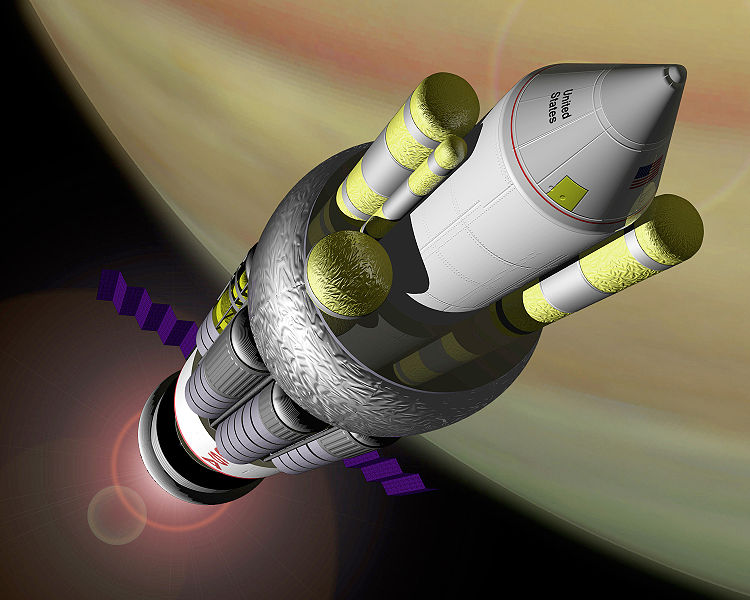Fitxer:NASA-project-orion-artist.jpg

Mida d'aquesta previsualització: 750 × 600 píxels. Altres resolucions: 300 × 240 píxels | 600 × 480 píxels | 960 × 768 píxels | 1.280 × 1.024 píxels | 2.560 × 2.048 píxels | 3.000 × 2.400 píxels.
Fitxer original (3.000 × 2.400 píxels, mida del fitxer: 950 Ko, tipus MIME: image/jpeg)
Historial del fitxer
Cliqueu una data/hora per veure el fitxer tal com era aleshores.
| Data/hora | Miniatura | Dimensions | Usuari/a | Comentari | |
|---|---|---|---|---|---|
| actual | 11:07, 14 jul 2005 |  | 3.000 × 2.400 (950 Ko) | Bricktop |
Ús del fitxer
Les 4 pàgines següents utilitzen aquest fitxer:
Ús global del fitxer
Utilització d'aquest fitxer en altres wikis:
- Utilització a ar.wikipedia.org
- Utilització a ast.wikipedia.org
- Utilització a bn.wikipedia.org
- Utilització a br.wikipedia.org
- Utilització a de.wikipedia.org
- Utilització a en.wikipedia.org
- Stanisław Ulam
- Nuclear pulse propulsion
- Project Orion (nuclear propulsion)
- Robert F. Christy
- Peaceful nuclear explosion
- User:Phædrus
- User:Trilobitealive
- Portal:Spaceflight/Selected article/Week 14 2009
- User:Trilobitealive/Userboxes/Orion1
- Wikipedia talk:WikiProject Userboxes/New Userboxes/Archive 16
- User:Boundarylayer/sandbox
- User:Carbon6
- Utilització a en.wikiquote.org
- Utilització a es.wikipedia.org
- Utilització a et.wikipedia.org
- Utilització a eu.wikipedia.org
- Utilització a fa.wikipedia.org
- Utilització a fi.wikipedia.org
- Utilització a fr.wikipedia.org
- Utilisateur:Mike old
- Utilisateur:MG/
- Utilisateur:Wikisoft*
- Discussion Wikipédia:Annonces
- Wikipédia:Le Bistro/15 mars 2006
- Wikipédia:Le Bistro/14 mars 2006
- Discussion Projet:Astronautique/Archive 3
- Utilisateur:MG/Portail:Astronautique
- Portail:Astronautique/Les machines
- Utilisateur:Wikisoft*/Astronautique
- Voyage interstellaire
- Colonisation de l'espace
- Projet Orion
- Propulsion nucléaire pulsée
Vegeu més usos globals d'aquest fitxer.



